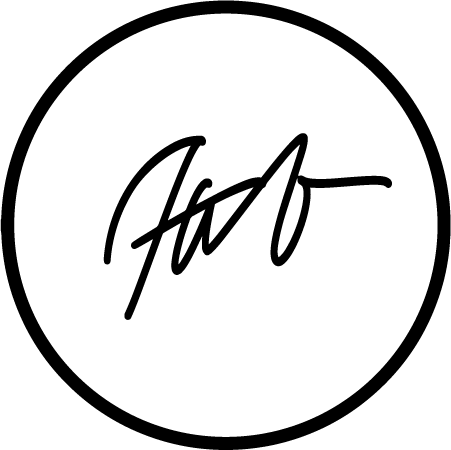
HELLO! this is your future, calling
The Why is a statement of purpose that describes why you do the work you do & why you live the lifestyle you do.
It is your calling.
•
It is a vision of your life and work.
•
It is your core source of motivation.
•
It is your calling. • It is a vision of your life and work. • It is your core source of motivation. •
Super important FLUFF you need to read
Did you ever come home from a party and realize that you had a really good time—mostly because you met someone who got you talking about your life growing up or your experiences in your business?
Part of the fun that night (besides the joy of hearing yourself talk) may have been that, in hearing the stories, your listener developed an idea of who you are, one that you may have found startling. Instead of being just the middle child, for example, you emerged as the glue that held your siblings together. Instead of being only one of many employees, you were the new hire who walked in the door and started everyone in a fresh direction by saying, “Why do you guys always do it that way?”
Reconnecting with your past to discover your WHY can be fun in that same kind of way. As you pan for your stories and share them, themes and insights about yourself or your team that you may never have expressed before will emerge. As the process unfolds, one or two of those nuggets will shine brighter than all the others. They will feel bigger and more important. They shine so brightly that you’ll point to them and say, “That’s me—that’s who I am,” or “That’s us—that’s our team.”
These themes become the foundation of your Why Statement.
Your “Why” comes from within you.
There's this feeling that drives you to do what you love, even if it means making sacrifices. You just can't help but pursue the work that gives you purpose because it's part of who you are. It's like your calling, and you can't even imagine doing anything else.
You get it, we get it.
But how do we discover our WHY?
Discovering your WHY isn't a one-size-fits-all process. It's a personal exploration that requires the right set of tools. Explore these tools, and see if there’s something that clicks with you.
-
Yes, we’re borrowing some marketing concepts, just because we can.
Evaluating your Strengths, Weaknesses, Opportunities, and Threats can help us have more CLARITY. This gives us a clear picture of where we stand and helps align our personal goals with our professional aspirations.
-
It's based on the principle that asking WHY five consecutive times can lead you to the root of a problem or help you discover the core reason behind a belief or action. This technique is often used in problem-solving, business analysis, and personal development.
-
Mind mapping is a powerful visual thinking tool that helps in structuring information, helping you to better analyze, comprehend, synthesize, recall, and generate new ideas. Its visual form mimics the way our brains think: jumping from idea to idea, making connections, and seeing patterns.
SWOT Analysis
Let’s start with a clear example: Lara is a lifestyle coach.
Now, we’re gonna help her have more clarity through the analysis.
Strengths:
Expertise and Knowledge: Profound understanding of health, wellness, and lifestyle management.
Personalized Service: Ability to tailor advice and coaching to individual client needs.
Strong Communication Skills: Effective in motivating and guiding clients.
Credibility and Reputation: Established trust and positive testimonials from past clients.
Networking: Strong connections with health professionals, gyms, and wellness centers.
Weaknesses:
Market Competition: High competition from other coaches and wellness professionals.
Scalability Limitations: One-on-one coaching model limits the number of clients served.
Dependency on Reputation: Business heavily reliant on personal reputation and client referrals.
Limited Resources: For independent coaches, resources for marketing and expansion might be limited.
Keeping Up with Trends: Need to continuously update skills and knowledge in a rapidly evolving field.
Opportunities:
Growing Health Consciousness: Increasing public interest in health and wellness.
Technological Advancements: Use of digital tools and platforms for remote coaching and wider reach.
Collaborations and Partnerships: Opportunities to collaborate with health centers, corporate wellness programs, and online platforms.
Diversifying Services: Expanding offerings to include group sessions, workshops, and online courses.
Global Market: Potential to reach international clients through online coaching.
Threats:
Economic Downturns: Personal coaching might be viewed as a luxury and could be affected in economic slowdowns.
Regulatory Changes: Potential changes in health and wellness coaching regulations.
Market Saturation: Growing number of lifestyle coaches entering the market.
Technological Disruptions: New tech-based solutions could disrupt traditional coaching methods.
Changing Consumer Preferences: Shifts in what clients seek from lifestyle coaching, such as more emphasis on mental health or specific diet trends.
Based on our findings about Lara, we have concluded that the core of her brand is a passion for helping clients achieve their health and wellness goals. This is evident from her strengths such as personalized service and excellent communication skills. Lara is driven by the desire to change people's lives by helping them unlock their full potential and live their best lives. At this point, you might be thinking, "Well, that's a very general WHY that almost every coach has," and you would be right. The difference lies in HOW Lara wants to empower people, what her process looks like, and how she can innovate this industry. However, without knowing her WHY, she wouldn't have a solid foundation to build upon.
The Five WHYs Technique
How the Five Whys Technique Works:
Start with a Statement: Begin with a statement of a problem or a situation you're dealing with.
Ask Why: Ask “Why?” in response to the statement. This first why should address the immediate reason or cause.
Go Deeper with Each Why: After each answer, ask “Why?” again, digging deeper each time. The goal is to progressively uncover layers of causes or motivations that lie beneath the surface.
Repeat Until the Root Cause or Core Reason is Revealed: Typically, by the time you ask the fifth why, you should reach a more fundamental cause or reason.
Reflect and Act: Once you've identified the root cause or core reason, you can reflect on this new understanding and plan actions or changes.
Example:
Situation: Imagine you're consistently working late hours and feeling dissatisfied.
First Why: Why am I consistently working late?
Answer: Because I have too much work to complete each day.
Second Why: Why do I have too much work each day?
Answer: Because I'm taking on more tasks than I can handle.
Third Why: Why am I taking on more tasks than I can handle?
Answer: Because I have a hard time saying no when my colleagues ask for help.
Fourth Why: Why do I have a hard time saying no to my colleagues?
Answer: Because I feel like they won’t respect me or I’ll let them down.
Fifth Why: Why do I feel that not helping will lead to a loss of respect or disappointment?
Answer: Because I am basing my self-worth on others' approval and not setting healthy boundaries.
Core Reason Identified: The root cause of working late is not just the workload; it's a deeper issue related to self-worth and the inability to set boundaries. This realization can lead to actionable steps like working on assertiveness, setting clear boundaries, and re-evaluating self-worth independent of others' opinions.
Example 2:
Imagine a personal brand centered around fitness coaching. The goal is to understand why fitness coaching is the chosen path.
Why do you want to be a fitness coach?
Because I want to help people get in shape.
Why do you want to help people get in shape?
Because I believe being in good physical condition improves overall life quality.
Why do you believe physical fitness improves life quality?
Because it boosts confidence, health, and energy, leading to more success and happiness in other life areas.
Why is boosting confidence, health, and energy important to you in your coaching?
Because I have experienced this transformation myself and it had a profound impact on my life.
Why did this transformation have a profound impact on your life?
Because it not only improved my physical health but also my mental wellbeing and my relationships, making me a more fulfilled and effective individual."
Through this process, the personal brand uncovers a deeper 'why': It's not just about fitness but a holistic transformation that impacts multiple aspects of life, leading to overall fulfillment. This insight can shape the brand's messaging, services, and audience engagement strategies.
Applying the Five Whys:
The Five Whys can be applied to a variety of situations, both personal and professional.
It’s important to be honest and open during the process. Sometimes, the answers can be uncomfortable or revealing.
This technique is especially useful for personal development, as it can reveal motivations and beliefs you might not be aware of.
Mind Mapping
The process of creating a mind map can spark new ideas and insights as you visually explore the connections between different pieces of information.
How Mind Mapping Works:
Start with a Central Idea: This is typically placed in the middle of your map. The central idea is the starting point of your mind map and represents the topic you are exploring.
Add Branches for Major Subtopics: From the central idea, draw branches outwards. Each branch represents a key theme or subtopic related to your central idea.
Expand with Sub-Branches: For each key theme or subtopic, add further branches to explore more detailed aspects of the idea.
Use Keywords and Images: Mind maps work best when you use single words or short phrases instead of long sentences. Images can also be a very powerful tool in a mind map. They can convey much more information in a single glance than a bunch of words.
Connect Ideas: If different sections of your mind map have a connection, draw lines between them. This helps in understanding the relationships between different parts of the topic.
Be Creative: There’s no right or wrong way to create a mind map. The more personal and creative it is, the more it will resonate with you.
Example:
Central Idea: Personal Development
Branch 1: Skills
Sub-Branches: Communication, Leadership, Time Management.
Branch 2: Health
Sub-Branches: Exercise, Diet, Mental Health.
Branch 3: Career
Sub-Branches: Networking, Career Goals, Education.
Branch 4: Personal Interests
Sub-Branches: Reading, Travel, Hobbies.
For each of these branches and sub-branches, you could go further. Under “Time Management,” you might add branches for “Prioritization,” “Tools,” and “Techniques.” Under “Diet,” you could branch out to “Nutrition,” “Meal Planning,” and “Healthy Recipes.”
The mind map for personal development might include images like a clock for time management, a brain for mental health, and so on. Connections might be drawn between “Exercise” and “Mental Health” to highlight the link between physical and mental wellbeing, or between “Networking” and “Career Goals” to show how one can influence the other.
Applying Mind Mapping:
Problem Solving: Break down the parts of a problem to explore solutions.
Brainstorming: Generate and connect ideas spontaneously.
Planning: Organize your thoughts for projects or personal goals.
Studying: Summarize and remember information for exams or learning.

Living your WHY
means embodying your core values and purpose in every aspect of your life and working consistently over time. This is a dynamic process – as you grow and evolve, so might your WHY.
It's about adapting while staying true to your core principles.
Extra Tools
-
Find Your Why: A Practical Guide for Discovering Purpose for You and Your Team
just click the text above -
Ted Talk - Start with why -- how great leaders inspire action
just click the text above




